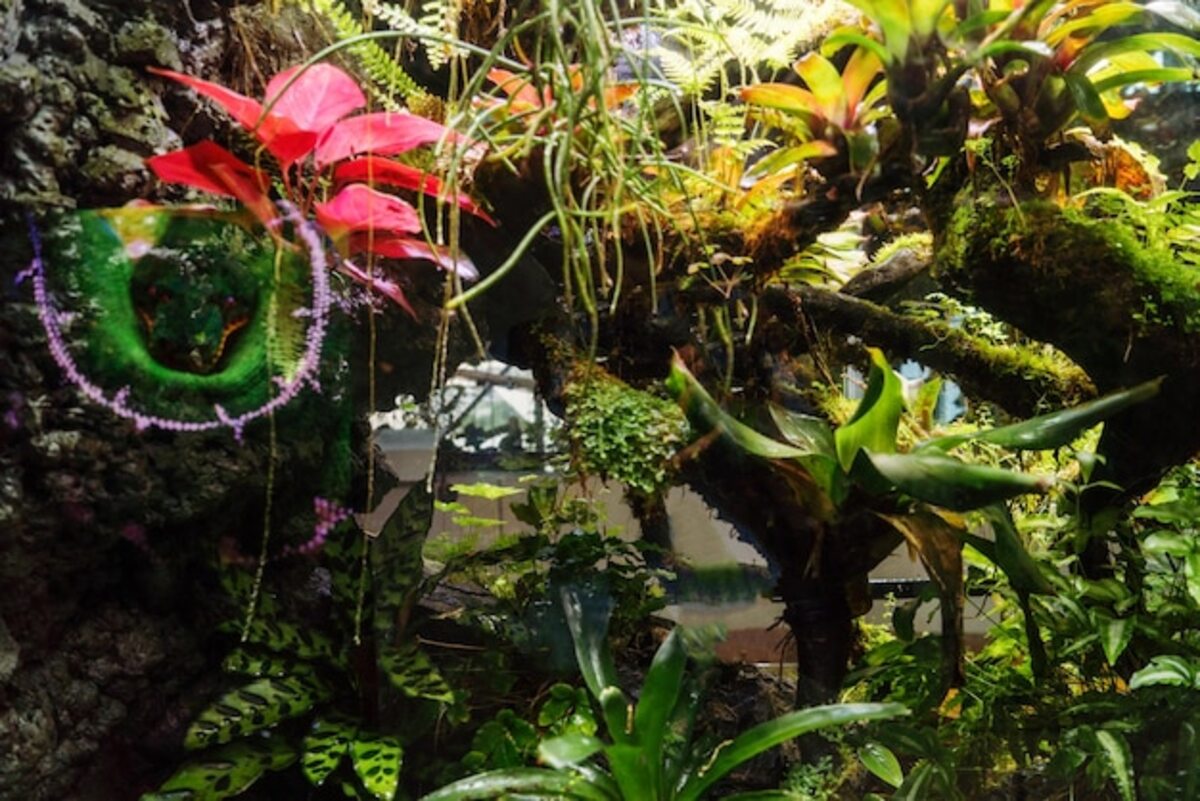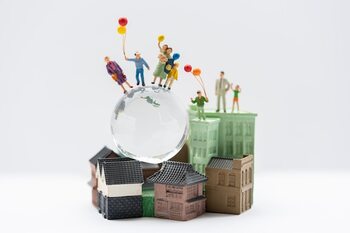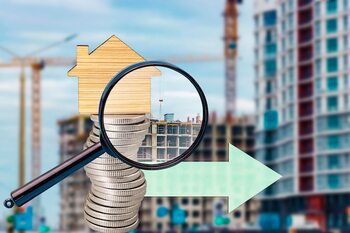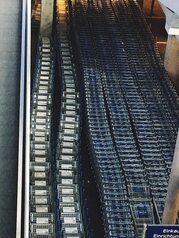The importance of urban biodiversity in the value of your home

Urban biodiversity is a hidden treasure that not only beautifies our cities but also directly influences the value of your home. In a world where appreciation becomes increasingly competitive, understanding how green spaces and local wildlife affect your property can make the difference between a smart investment and a missed opportunity. In this article, we will explore how urban biodiversity can enhance your quality of life and boost the resale value of your home.
The connection between biodiversity and quality of life
The connection between biodiversity and quality of life is evident when considering the multiple benefits that natural spaces offer in urban environments. The presence of green areas, such as parks and gardens, not only provides a refuge for various species of flora and fauna but also translates into an increase in the emotional well-being of people. Studies have shown that contact with nature can reduce stress, improve mental health, and encourage greater physical activity among residents. All of this contributes to creating healthier and happier communities, which in turn elevates the appeal of properties in those areas.
Additionally, urban biodiversity plays a crucial role in environmental sustainability, which is increasingly valued by potential buyers. An environment rich in biodiversity helps regulate the local climate, improves air quality, and promotes efficient water management. These factors not only benefit current residents but are also considered by those looking to purchase a home; an ecological community can be seen as a safer and more desirable investment. Thus, it is evident that strengthening our connection with nature not only enhances our daily quality of life but can also positively influence the economic value of our properties.
2. Green spaces: the new urban gold
Green spaces have become an invaluable resource in modern cities, transforming into the new urban gold. The presence of parks, community gardens, and green rooftops not only enhances the aesthetics of a neighborhood but also provides a range of environmental and social benefits that increase property appeal. These spaces act as urban lungs, filtering air pollutants and regulating temperature, resulting in a healthier environment for residents. Additionally, they foster a sense of community by offering places where people can gather, socialize, and enjoy outdoor activities.
The biodiversity found in these green spaces plays a crucial role in the overall well-being of cities. The local flora and fauna contribute to pollination, improve water quality, and create habitats for various species, which in turn promotes a more balanced ecosystem. For homeowners, this means that living near areas with high biodiversity can significantly increase property value. Potential buyers often prefer properties close to parks or natural areas due to the emotional and psychological benefits associated with them. Therefore, investing in a home surrounded by green spaces not only ensures a better quality of life but also represents a smart strategy for maximizing the long-term value of the home.
3. How do natural areas influence the real estate market?
Natural areas, such as parks, gardens, and ecological reserves, have a significant impact on the real estate market. These zones not only offer a visual respite and an aesthetic improvement to the urban environment but also provide spaces for recreational and social activities. Proximity to green areas has been linked to greater resident satisfaction and an increase in quality of life. This translates into higher demand for properties close to these natural spaces, often resulting in an increase in home values. Current buyers are increasingly looking for environments that allow them to enjoy nature without leaving the city, making these features essential when assessing a property's potential for appreciation.
In addition to their aesthetic and recreational appeal, natural areas play a crucial role in urban sustainability. An environment rich in biodiversity helps improve air quality, reduce noise, and mitigate the effects of climate change by regulating temperatures and controlling flooding. Properties located near these healthy ecosystems are often viewed as more desirable by environmentally conscious buyers. This creates a trend toward higher prices in such areas, as investors consider not only the present value but also the future potential linked to sustainable and responsible practices. Therefore, understanding how natural areas influence the real estate market is essential for any owner or buyer looking to maximize their investment.
4. Local wildlife: an unexpected attraction for buyers
The local wildlife, with its diversity and charm, has become an unexpected attraction for homebuyers. The presence of songbirds, colorful butterflies, and other wildlife not only enriches the visual and auditory environment of a property but also creates a healthier and more relaxing atmosphere. Areas where local fauna thrives are often associated with better air quality and an ecological balance that benefits both residents and the surrounding ecosystem. Thus, having a vibrant community of species can be perceived as a luxury that many buyers are willing to pay for. Moreover, the connection to nature offered by local wildlife encourages a more active and sustainable lifestyle. Homes located near parks or green areas where various species inhabit have the potential to attract those interested in outdoor activities such as hiking, birdwatching, or simply enjoying quiet moments in the company of nature. These unique features not only enhance the aesthetic appeal of the neighborhood but also add value to properties in terms of emotional and community well-being, thus becoming a key factor when deciding on a real estate purchase.
5. Strategies to promote biodiversity in your community
Promoting biodiversity in your community not only contributes to the well-being of the ecosystem but can also significantly enhance the appeal of your neighborhood. One of the most effective strategies is the creation of community gardens and shared green spaces. These places not only serve as refuges for various species of flora and fauna but also promote social interaction among neighbors. By getting involved in the planning and maintenance of these spaces, residents can learn about native plants and how to care for the environment, creating a sense of belonging that often translates into greater stability in the value of nearby properties.
Another effective strategy is to organize awareness campaigns about the importance of preserving local habitats and promoting sustainable practices. This could include educational workshops on composting, responsible water management, and planting native species that attract pollinators like bees and butterflies. Additionally, encouraging property owners to reduce the use of chemical pesticides can help protect local wildlife, resulting in a healthier ecosystem. By implementing these collective actions, not only is urban biodiversity increased, but a more pleasant and valuable living environment is also created, benefiting both current and future residents.
6. Successful examples of cities that bet on nature
Various cities around the world have shown that integrating nature into their urban development not only improves the quality of life for their inhabitants but also increases property values. A prominent example is Singapore, known for its innovative approach to green spaces. The city-state has implemented an ambitious "city in a garden" plan, where vertical gardens and green roofs combine to create a vibrant natural environment. These initiatives not only beautify the city but have also significantly elevated the appeal of residential and commercial properties, making Singapore one of the most desired destinations for living and investing. Another notable case is Copenhagen, which has invested in sustainability and urban biodiversity by creating parks and natural areas accessible to all. The city has transformed former industrial spaces into green zones, thus promoting both local flora and fauna. This commitment to nature has led to a significant increase in property values in neighborhoods near these revitalized spaces. Residents enjoy not only better air quality and a healthier environment but also the positive impact on their investments. These examples highlight how investing in nature can be an effective strategy to enrich our cities and enhance the value of our homes.
7. The future of urbanism: towards more sustainable cities
As urban planning evolves, sustainability has become a fundamental pillar in city planning. Future metropolises will seek to integrate biodiversity not only as an aesthetic element but as a key strategy to improve air quality, regulate the climate, and enhance the well-being of their inhabitants. Green spaces, such as parks and vertical gardens, will be designed not only to beautify the streets but also to attract diverse species of flora and fauna. This interconnection between nature and urbanism will not only benefit the environment but will also increase the value of nearby properties, making investing in homes in areas with this planning increasingly attractive.
The transition to more sustainable cities involves a change in how we perceive and value our urban environments. By promoting urban biodiversity, an ecosystem is created where residents can enjoy the direct and indirect benefits that nature offers. This includes everything from a reduction in stress levels to a notable improvement in physical and mental health. Furthermore, as these practices become desirable standards for potential buyers, properties located near areas rich in biodiversity will see a significant increase in demand. Therefore, embracing the future of sustainable urban planning can be a crucial decision not only for our planet but also to maximize the value of our real estate investments.



